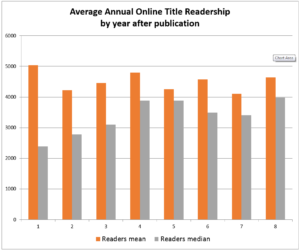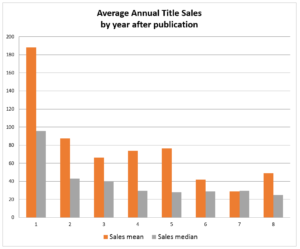One Hundred Books: How Far Have We Come? (Part Two)
This is part of a three-part series of blogs to celebrate the publication of our hundredth book. To read the first part, click here. To read the final part, click here.
A Global Outlook: Access for Everybody
Why Are We Needed?
Most people in the developing world never own a book. Even in developed countries, the prohibitive price of textbooks and academic titles hinders education, eating into shrinking library budgets and also making it less likely that individuals can afford to buy academic books. In developing countries the situation is even more critical: economic factors combine with lack of infrastructure to restrict access to printed textbooks and university-level titles.
Globally, there are more people enrolling in courses of study than ever before; more people engaging with research and ideas than ever before; more people using digital technology to discover information than ever before. By changing the nature of the academic book, we want to enable everyone to access high-quality textbooks and peer-reviewed research, regardless of income. With the power of digital Open Access publishing, we can make this happen.
What Can We Do?
All our titles are available to read for free online in HTML or PDF format, and to celebrate our one hundredth title, we are delighted to announce that we are making every single one of our hundred books free to download as a PDF.
Open Access means more than this, however. We work in partnership with organisations such as Worldreader to make our books accessible to readers across the globe, including those who only have basic mobile phones or who rely on ereaders donated to local libraries. We are also delighted to announce that in the coming months we will be working with Library For All and other organisations to offer our Library Membership Programme without charge to libraries in the developing world, thus offering another free route to access for students studying in less well-endowed universities. We are in discussions with other organisations to help us reach as many libraries as possible – if you would like to be involved, please contact us.
The Difference Open Access Makes – in Numbers
Thanks to Open Access, our titles have reached people who might never have been able to read the books otherwise. Seven of the top twenty countries who access our books most frequently are in the developing world: India, Kenya, Nigeria, South Africa, the Philippines, Ethiopia, and Brazil. The readership figures for some of our individual titles demonstrate even more starkly how effective Open Access publishing can be at breaking down the barriers to knowledge.
Ruth Finnegan’s Oral Literature in Africa, which we published in its second edition in 2012, has subsequently been read almost 131,000 times and it has been read more in Africa than in any other continent. By contrast, it has sold only 510 copies, demonstrating that a book might reach many more readers when it is available via Open Access. Until this seminal study was published in an Open Access format, it had fallen out of print and was mostly available only in well-endowed university libraries.
Similarly, Feeding the City: Work and Food Culture of the Mumbai Dabbawalas by Sara Roncaglia has been accessed by almost 13,000 readers and it has been read more in India than in any other country, but it has sold only 146 copies.
We are proud that our World Oral Literature Series, to which Finnegan’s work belongs, makes it possible for communities in the developing world to access freely the books that have been written about their literature and culture by academics from elsewhere. Our readership statistics also reveal some striking differences in the types of material accessed across the world.
In the UK the top 5 most-read books are all textbooks, with the exception of Caroline Warman’s anthology Tolerance. In North America, South America and Europe (minus the UK) economics and the digital humanities are extremely popular. In Asia and Africa, however, our books by Finnegan, Roncaglia, Amartya Sen and Gordon Brown are the most heavily accessed. The popularity of works by Sen and Brown in Asia and Africa is particularly illuminating: these books are designed to influence policy at a global level and to be read and reflected on by people in all walks of life; aims that can both be achieved with Open Access publishing.
Who Writes Our Books?
It’s important to us that our books should be accessed by people the world over, but we also want to publish quality research from across the globe and by talented writers from many different intellectual and cultural backgrounds. Our books published since the beginning of 2016 have been written by 229 contributors in total (including authors of individual chapters in edited collections) of whom 18 are from developing countries (8%) and 89 are female (39%). We want to build on these figures to diversify and expand our authorship, as well as our readership.
For information about submitting a book proposal to us, including details of our rigorous peer-review process, please click here.
Why IS Open Access Attractive to Authors?
It increases the longevity of their work, making it accessible to a greater number of readers over time. A university-level book typically sells 200 copies during its entire lifetime, but our books are read by an average of between 300-400 readers per title every month from over 200 countries. In total, we have received over 1 million book visits, with about 20% of our readers based in developing countries.
Academic authors typically don’t earn a substantial amount from royalties for monographs or edited collections, so there isn’t a heavy financial penalty for publishing open access — and our authors are entitled to royalties from sales of the paid-for editions of their work, although some of them generously choose to waive this right so that the money can be put into publishing more open access books.
Now we can look back at data from one hundred books, we can see that, while sales figures for each title drop off in the years after publication (as is typical across publishing), viewing statistics do not. As we have grown, the readership numbers for many of our titles have increased even while the sales figures have dropped. We have also noticed that, while the average number of readers we attract has remained high, our median viewer statistics have risen: meaning that we are attracting more readers to our titles across the board, and not just to our most popular titles.


2017 WISE Award Finalists
Finally, we were thrilled recently to be nominated as 2017 WISE Awards Finalists. The World Innovation Summit for Education rewards organisations for their innovative and impactful approaches to today’s most urgent education challenges across the globe, and we are delighted to be recognised alongside some very impressive projects. Such achievements spur us on to meet the challenge of providing free, excellent educational material for anybody who wants to access it, both in the developed and developing world.
In our next post we’ll discuss the technological innovations that, we believe, go hand-in-hand with Open Access publishing.
This is part of a three-part series of blogs to celebrate the publication of our hundredth book. To read the first part, click here. To read the final part, click here.



